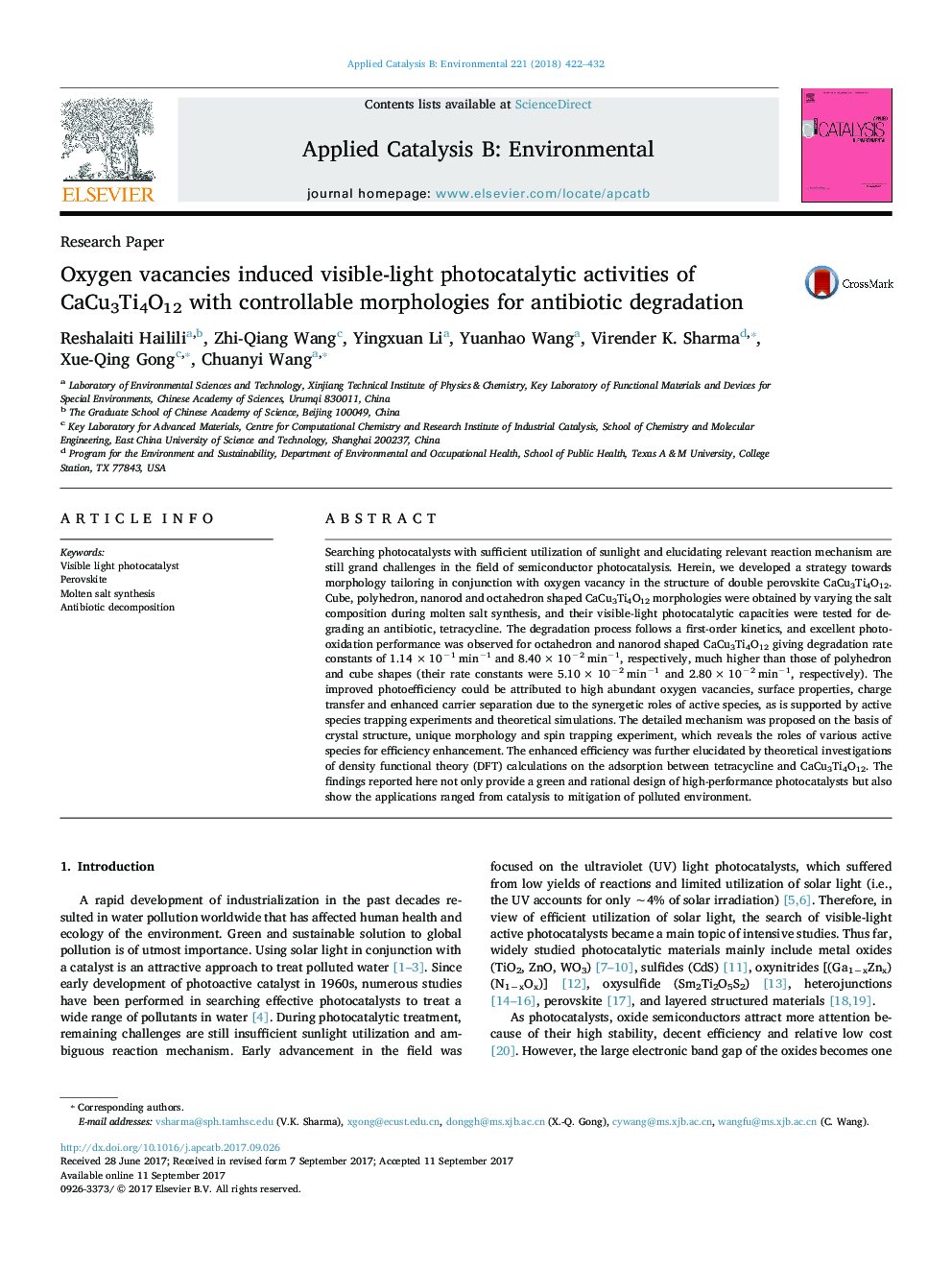| Article ID | Journal | Published Year | Pages | File Type |
|---|---|---|---|---|
| 6453469 | Applied Catalysis B: Environmental | 2018 | 11 Pages |
â¢Variation of salt composition results diverse morphologies of perovskite CaCu3Ti4O12 during molten salt synthesis.â¢The CaCu3Ti4O12 catalysts show visible light driven activity for antibiotic degradation.â¢Synergetic roles of oxygen vacancies, reaction environments and unique morphologies cocontribute to the high performance of CaCu3Ti4O12.
Searching photocatalysts with sufficient utilization of sunlight and elucidating relevant reaction mechanism are still grand challenges in the field of semiconductor photocatalysis. Herein, we developed a strategy towards morphology tailoring in conjunction with oxygen vacancy in the structure of double perovskite CaCu3Ti4O12. Cube, polyhedron, nanorod and octahedron shaped CaCu3Ti4O12 morphologies were obtained by varying the salt composition during molten salt synthesis, and their visible-light photocatalytic capacities were tested for degrading an antibiotic, tetracycline. The degradation process follows a first-order kinetics, and excellent photooxidation performance was observed for octahedron and nanorod shaped CaCu3Ti4O12 giving degradation rate constants of 1.14Â ÃÂ 10â1Â minâ1 and 8.40Â ÃÂ 10â2Â minâ1, respectively, much higher than those of polyhedron and cube shapes (their rate constants were 5.10Â ÃÂ 10â2Â minâ1 and 2.80Â ÃÂ 10â2Â minâ1, respectively). The improved photoefficiency could be attributed to high abundant oxygen vacancies, surface properties, charge transfer and enhanced carrier separation due to the synergetic roles of active species, as is supported by active species trapping experiments and theoretical simulations. The detailed mechanism was proposed on the basis of crystal structure, unique morphology and spin trapping experiment, which reveals the roles of various active species for efficiency enhancement. The enhanced efficiency was further elucidated by theoretical investigations of density functional theory (DFT) calculations on the adsorption between tetracycline and CaCu3Ti4O12. The findings reported here not only provide a green and rational design of high-performance photocatalysts but also show the applications ranged from catalysis to mitigation of polluted environment.
Graphical abstractDownload high-res image (176KB)Download full-size image
